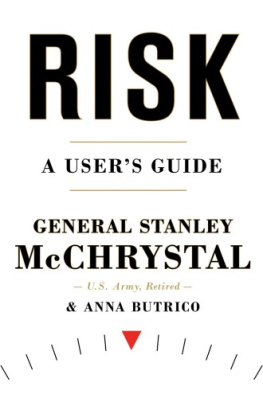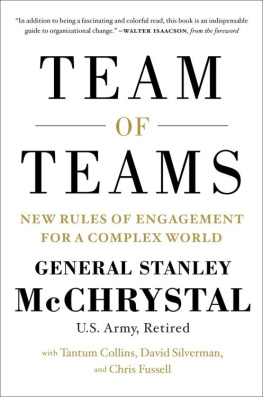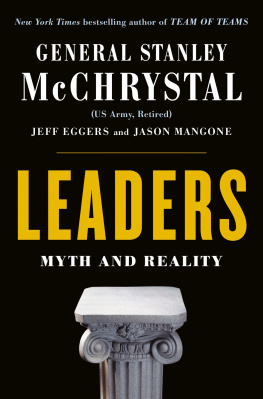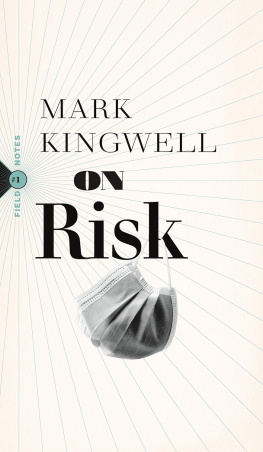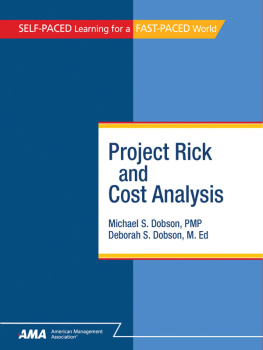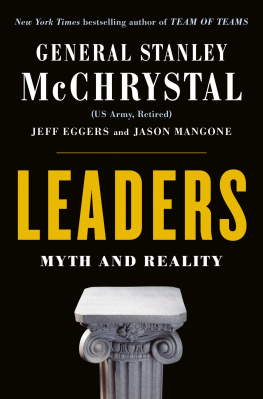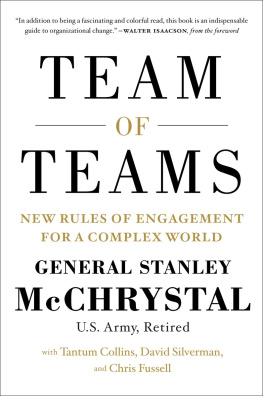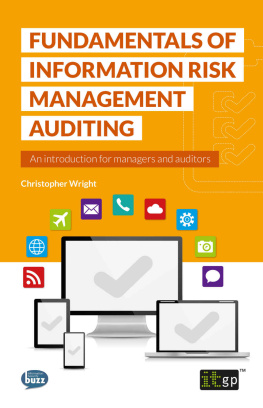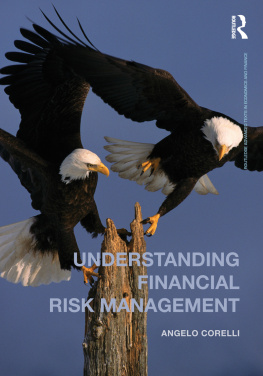Annotation
From the bestselling author of Team of Teams and My Share of the Task , an entirely new way to understand risk and master the unknown. Retired four-star general Stan McChrystal has lived a life associated with the deadly risks of combat. From his first day at West Point, to his years in Afghanistan, to his efforts helping business leaders navigate a global pandemic, McChrystal has seen how individuals and organizations fail to mitigate risk. Why? Because they focus on the probability of something happening instead of the interface by which it can be managed. Control offers a new system by which we can detect and respond to risk. Instead of defining risk as a force to predict, McChrystal and coauthor Anna Butrico show that there are in fact ten dimensions of control we can adjust at any given time. By closely monitoring these controls, we can maintain a healthy Risk Immune System that allows us to effectively anticipate, identify, analyze, and act upon the ever-present possibility that things will not go as planned. Drawing on examples ranging from military history to the business world, and offering practical exercises to improve preparedness, McChrystal illustrates how these ten factors are always in effect, and how by considering them, individuals and organizations can exert mastery over every conceivable sort of risk that they might face. We may not be able to see the future, but with Control, we can improve our resistance and build a strong defense against what we know--and what we don't.
PORTFOLIO / PENGUIN
An imprint of Penguin Random House LLC
penguinrandomhouse.com
Copyright 2021 by McChrystal Group LLC
Penguin supports copyright. Copyright fuels creativity, encourages diverse voices, promotes free speech, and creates a vibrant culture. Thank you for buying an authorized edition of this book and for complying with copyright laws by not reproducing, scanning, or distributing any part of it in any form without permission. You are supporting writers and allowing Penguin to continue to publish books for every reader.
Owing to limitations of space, this page is an extension of this copyright page.
Illustrations: 1, 2, 3, 4, 5, 6, 7, 8, 9, 10, and 11 by Lina Than.
Maps: 12, 13, and 14 by Gene Thorp.
Library of Congress Cataloging-in-Publication Data
Names: McChrystal, Stanley A., author. | Butrico, Anna, author.
Title: Risk : a users guide / General Stanley A. McChrystal, US Army, Retired & Anna Butrico.
Description: New York City : Portfolio, 2021. | Includes bibliographical references and index. | Description based on print version record and CIP data provided by publisher.
Identifiers: LCCN 2021018223 (print) | LCCN 2021018224 (ebook) | ISBN 9780593192214 (ebook) | ISBN 9780593192207 (hardcover) |
Subjects: LCSH: Risk management. | Industrial management. | Organizational effectiveness.
Classification: LCC HD61 (ebook) | LCC HD61 .M3854 2021 (print) | DDC 658.15/5dc23
LC record available at https://lccn.loc.gov/2021018223
BOOK DESIGN BY TANYA MAIBORODA, ADAPTED FOR EBOOK BY CORA WIGEN
The use of U.S. Department of Defense (DoD) visual information and images sourced from the Defense Visual Information Distribution Service (DVIDS) do not imply or constitute DoD endorsement.
pid_prh_5.8.0_c0_r0
To the health-care and other essential workers who, when faced with risk that is often difficult to effectively assessand impossible to completely mitigaterespond with quiet courage, and too often sacrifice themselves for others.
Contents
Prologue: Crimson Contagion
Introduction: A Question of Risk
| Part One |
ON RISK
Chapter 1.
What If?
Chapter 2.
Damocles and Me
| Part Two |
RISK CONTROL FACTORS
Chapter 3.
Communication: The Lifeblood of the System
Chapter 4.
Narrative: The Mind of the Beholder
Chapter 5.
Structure: Putting the Building Blocks Together
Chapter 6.
Technology: The Turbulent Marriage of Man and Machine
Chapter 7.
Diversity: Blind Men and Elephants
Chapter 8.
Bias: Filters That Distort
Chapter 9.
Action: The Coefficient of Friction
Chapter 10.
Timing: Slow Buses and Fast Cars
Chapter 11.
Adaptability: Willing and Able
Chapter 12.
Leadership: The Indispensable Factor
| Part Three |
STRENGTHENING THE SYSTEM
Chapter 13.
Game Time
Chapter 14.
Building the Capacity
Chapter 15.
Assessing the System
Chapter 16.
Symptoms to Solutions: Mapping Ways to Strengthen Your Risk Immune System
Chapter 17.
Solutions: Things We Can Do
Epilogue
The Myth of Helplessness
Acknowledgments
Notes
Image Credits
Index
PROLOGUE
Crimson Contagion
We are too much accustomed to attribute to a single cause that which is the product of several, and the majority of our controversies come from that.
MARCUS AURELIUS, PHILOSOPHER AND EMPEROR OF ROME
Y ou may remember how it started.
A Chicago tourist returned from China carrying a deadly respiratory virus. The fifty-two-year-old traveler was the first confirmed American carrier of a novel influenza virus. The virus spread quickly through human-to-human contact, and within days, hospitals across the country were overrun with patients experiencing fevers, chills, low energy, and unrelenting coughs. Americas medical supply chain failed, and critical resources, like protective gear and essential medical equipment, fell in short supply.
In mere weeks, the situation went from bad to worse. Medical professionalsthe critical front line of the response to the virusquickly became patients themselves, further straining systems that buckled under the weight of a pandemic-inflicted population.
An ill-defined leadership structure, combined with mixed communications from Washington, thwarted a competent response to the outbreak. Within months of the initial case emerging in Chicago, the virus was on track to infect 110 million Americans and kill 586,000, a mortality rate roughly five times greater than that of the common seasonal flu. It constituted a national calamity of the first order.
You may think you recall these eventsbut they didnt actually happen.
In fact, the outbreak starting in Chicago was the scenario for a series of exercises called Crimson Contagion that the Department of Health and Human Services (HHS) convened in 2019 to test the United States capacity to respond to a severe pandemic. Its results were as alarming as they were conclusive: our nation was woefully underprepared.
Crimson Contagion was a wake-up callbut the nation slept through the alarm. Although key members of the administration were aware of what the exercises revealedissues that ranged from severe equipment shortages to uncoordinated federal and state responsesthe White House stood by its 2018 decision to dismantle the National Security Council directorate that was responsible for pandemic preparedness. And there is scant evidence that Crimson Contagions findingsspecifically recommendations about school closures and fast, widespread testingled to changes in policy.
Tragically, in a matter of just a few short months, the systemic weaknesses that were identified by the exercise were proved all too real: the foreboding crimson bubbling back to the surface with a virus of a different nameCOVID-19.
COVID-19 is a contagious respiratory and vascular disease caused by severe acute respiratory syndrome coronavirus 2 (SARS-CoV-2).
Put simply, the virus is a thief that breaks into bodies and corrupts cells in human airways. Once in position, the pathogen passes harmful RNA into healthy cells, which then produce proteins that, like accomplices, aid in creating copies of the virus. The virus travels from host to host in fluid droplets originating in airways that are spread through coughing, or even breathingmaking transmission possible without direct human contact.
Next page
